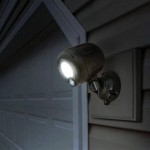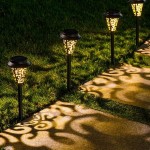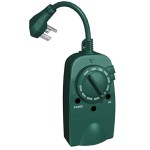Photography: Mastering the Art of Outdoor Lighting
Outdoor photography presents a unique set of challenges and opportunities compared to studio work. The ever-changing nature of natural light requires a keen understanding of its characteristics and how to harness its power effectively. Mastering outdoor lighting involves recognizing the subtleties of light direction, quality, and color temperature, allowing photographers to create compelling images that capture the essence of the scene.
Understanding Natural Light
Natural light is the most fundamental element in outdoor photography. Its characteristics are constantly changing, influenced by the time of day, weather conditions, and the surrounding environment.
Direction:
The direction of light significantly impacts the mood and dimensionality of a photograph. Sunlight can be categorized into three primary types:-
Direct Sunlight:
This type of light produces harsh shadows and high contrast, often used to create dramatic effects. -
Diffused Sunlight:
When sunlight is filtered through clouds or mist, it becomes softer and more evenly distributed, resulting in a more flattering and balanced light. -
Backlight:
When the light source is behind the subject, it creates a silhouette effect, highlighting outlines while emphasizing the subject's form.
Quality:
The quality of light refers to its hardness or softness. Direct sunlight produces hard light with sharp shadows, while diffused light creates soft shadows with a more gentle transition.
Color Temperature:
The color temperature of light is measured in Kelvin (K) and describes its warmth or coolness. Daylight typically ranges from 5000K to 6500K, while warm light (like sunset) has a lower Kelvin value (around 2000K).Harnessing Natural Light for Effective Photography
Understanding the characteristics of natural light allows photographers to strategically choose the best conditions for their desired outcome. Here are some tips for utilizing natural light effectively:
-
Golden Hour:
The golden hour, occurring shortly after sunrise and before sunset, offers soft, warm light that is ideal for portraits and landscapes. The low angle of the sun creates long shadows that add depth and dimension to the scene. -
Overcast Days:
While overcast skies may seem uninspiring, they provide a diffused, even light that is excellent for photographing landscapes and portraits. The lack of harsh shadows reduces contrast and enhances detail. -
Reflectors and Diffusers:
These tools can manipulate and modify natural light to create specific effects. Reflectors bounce light back onto the subject, filling in shadows and adding brightness, while diffusers soften harsh light. -
Using Shadows:
Shadows are an essential element of photography. They can add depth, shape, and dimension to a scene. Understanding how shadows are cast and how they interact with light is crucial for achieving desired results.
Time of Day and Weather Conditions
The time of day and weather conditions play a significant role in shaping the quality and direction of natural light.
Sunrise and Sunset:
The golden hours offer warm, soft light with long shadows. This time of day is ideal for capturing dramatic landscapes, portraits, and architectural scenes.
Midday:
Midday sun produces harsh, direct light that creates high contrast and strong shadows. While suitable for some subjects, it can be challenging for portraits as it may create unwanted shadows and squinting.
Overcast Days:
Overcast skies provide a diffused, even light source, making it ideal for landscapes, portraits, and macro photography. The lack of harsh shadows creates a soft, flattering effect.
Rainy Days:
Rainy days can offer a unique and dramatic atmosphere for photography. The reflections on puddles and wet surfaces create interesting textures and patterns.**Understanding the relationship between time of day, weather conditions, and light characteristics is vital for planning outdoor photography sessions.

Pin By David Casimer On Photography Ideas Lighting Setup Portrait Studio

Help The Sun Using Artificial Light In Outdoor Photography Learn By Zoner Photo Studio

The Best Lighting For Outdoor Photography Focus

The Best Lighting For Outdoor Photography Focus

Complete Guide To Outdoor Light In Photography Photographer

Allison Shelby Lighting Work Setup Dramatic Photography Photo Light

How To Mix Ambient Light And Fill Flash For Outdoor Portraits
Indoor Outdoor Lighting Setups Simple Diagrams For Learning Photography

Tips For Great Outdoor Photography Results Naldz Graphics

Lighting Set Ups Portrait Photography Essentials Outdoor
Related Posts







